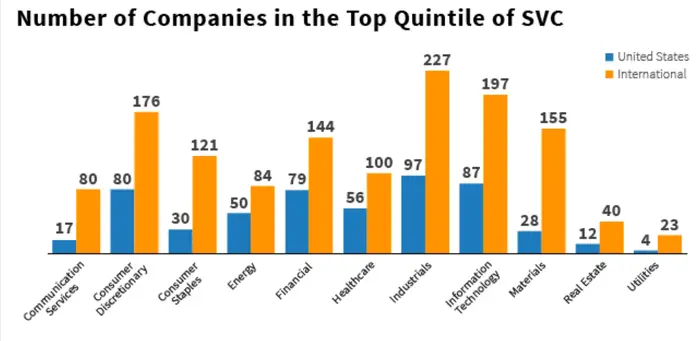The best-performing stocks will be outside the US after a decade of underperforming. 3 enticing markets, according to William Blair.

Global stock market
For the last decade, US stocks have outperformed the rest of the world, thanks to low interest rates and high corporate earnings.
But that could be set to change, according to William Blair’s global equity team.
“Several factors are making non-U.S. markets more attractive, including lower valuation, less concentrated opportunity set, and country-specific factors,” the bank said in a recent note.
With inflation and rates lower outside of the US, valuations have become more attractive overseas. And with most of the US stock market’s gains coming from the top 10% of companies, the bank believes that international markets have a more sustainable value creation trajectory.
The bank identified three non-US markets in particular that are positioned for explosive growth opportunities in the coming years: Japan, Europe, and India.
A decade of US outperformance might be coming to an end
The low-interest-rate environment that boosted corporate America and US GDP growth for the last decade could be coming to an end.
While markets are all but certain of a September rate cut after last week’s Jackson Hole symposium, there’s still uncertainty about just how fast and how much the Fed plans to cut. Outside of the country, however, rates are generally expected to be lower, the bank said, creating a better macroeconomic environment for equities.
Additionally, a large part of US outperformance is due to concentration among the biggest companies, with the top 10% of companies responsible for 80% of cash-flow profits and 70% of total market capitalization. This situation makes the US market overdependent on a select few names and susceptible to heightened volatility, the bank said.
Don’t count on the current US winners to remain at the top forever, according to William Blair.
“Historical shifts in the ranks of the largest companies suggest that today’s dominant players may not maintain their positions indefinitely,” the bank said.
Against this backdrop, global trade flows are also changing to favor international equities, according to the bank. Exports between emerging markets are increasing, strengthening the economies of international countries. As China develops, other Asian countries are increasing their market share in manufactured goods. And the ongoing conflict between Russia and Ukraine has redirected energy trade routes, resulting in more oil exports redirecting eastward and bolstering the economies of countries like India.
3 rising stars in the global economy
William Blair’s global equity team sees growth opportunities across all areas of the global economy. As shown below, international companies comprise the bulk of sustainable value-creation opportunities within each sector. Sustainable value creation is a metric used by William Blair to judge a company’s quality based on its return on invested capital, return on equity, and free cash flow margin.

The bank believes three markets in particular will take off in the coming years.
Japan has been a hot topic recently, and for good reason — its economy is going through a major transformation. Japanese corporate reforms have materially impacted the economy. New legislation mandating increased board independence, separation of CEO and chair, and more female directors will have long-term benefits to risk management, corporate decision-making, and shareholder value creation, William Blair said.
The bank also shared the following structural forces impacting Japanese markets. The Japanese government has initiated various incentives to encourage citizens to allocate capital into financial instruments instead of savings, driving flows into the Japanese stock market. Constitutional amendments for military expansion are another tailwind to the overall economy. As the Japanese economy emerges from a period of economic stagnation and deflation, the Japanese stock market is showing promising signs of growth.
Europe is also experiencing a period of economic revival as the energy crisis resulting from Russia’s invasion of Ukraine improves. Gas prices have declined as supply becomes less constrained, making it easier for European manufacturers to compete in the global market.
Additionally, William Blair sees individual outperformers in the European market, such as the Danish pharmaceutical company Novo Nordisk (NVO) responsible for the GLP-1 drugs Ozempic and Wegovy. According to Goldman Sachs, the GLP-1 market is set to grow from its current $6 billion to $100 billion by 2030, making it a considerable growth driver for European equities.
Lastly, the bank believes India will become a more prominent player in global markets. Recent bureaucratic reforms have created a more business-friendly economy in India. Digitization initiatives have standardized the country’s payment system. Similar to Japan, capital expenditures in India are also rising, which will support infrastructure and overall economic development.
India’s financial markets are also robust, with roughly 80% of the world’s options contracts having been executed in India in 2023, the bank said. Indian investors are also increasingly looking to raise capital directly from equity markets instead of banks, providing a further boost.






